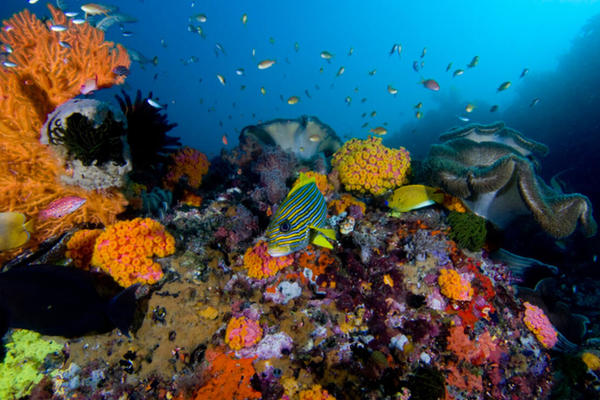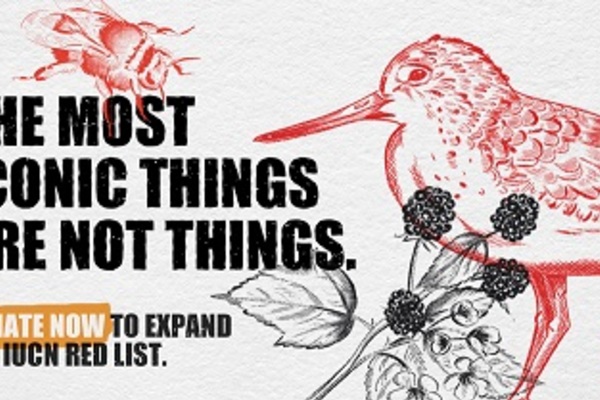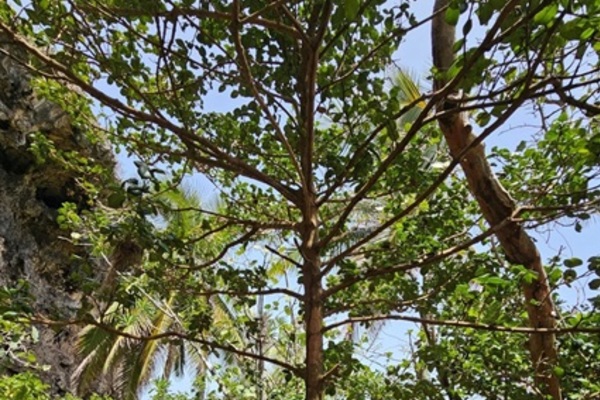The IUCN Red List of Threatened Species (original) (raw)
More than 46,300 species are threatened with extinction
That is still 28% of all assessed species.
Help us make The IUCN Red List a more complete barometer of life.
News from IUCN

Forty-four per cent of reef-building coral species globally are at risk of extinction, the IUCN Red List of Threatened Species™ reveals following a global assessment announced today at the ongoing COP29 UN climate conference in Azerbaijan.

Supporters of IUCN gathered on the sidelines of the 16th CoP to the UN Convention on Biodiversity in Cali, Colombia on 28 October to celebrate the 60th anniversary of the IUCN Red List of Threatened Species and to chart an ambitious path forwards for expanding the “barometer of life”.

The first Global Tree Assessment shows 38% of the world’s trees are threatened, according to the IUCN Red List. The latest update of the Red List also highlights the Western European hedgehog is in decline, causing its status to increase to Near Threatened.

Harpalyce macrocarpa (Critically Endangered, C2a(i)ver. 3.1)
What is The IUCN Red List?
Established in 1964, The International Union for Conservation of Nature’s Red List of Threatened Species has evolved to become the world’s most comprehensive information source on the global conservation status of animal, fungi and plant species.
The IUCN Red List is a critical indicator of the health of the world’s biodiversity. Far more than a list of species and their status, it is a powerful tool to inform and catalyze action for biodiversity conservation and policy change, critical to protecting the natural resources we need to survive. It provides information about range, population size, habitat and ecology, use and/or trade, threats, and conservation actions that will help inform necessary conservation decisions.
Learn more about The IUCN Red List
The IUCN Red List Categories and Criteria
The IUCN Red List Categories and Criteria are intended to be an easily and widely understood system for classifying species at high risk of global extinction. It divides species into nine categories: Not Evaluated, Data Deficient, Least Concern, Near Threatened, Vulnerable, Endangered, Critically Endangered, Extinct in the Wild and Extinct.
A taxon is Data Deficient (DD) when there is inadequate information to make a direct, or indirect, assessment of its risk of extinction based on its distribution and/or population status. A taxon in this category may be well studied, and its biology well known, but appropriate data on abundance and/or distribution are lacking.
Species categorized as Data Deficient (DD)
A taxon is Least Concern (LC) when it has been evaluated against the Red List criteria and does not qualify for Critically Endangered, Endangered, Vulnerable or Near Threatened.
Species categorized as Least Concern (LC)
A taxon is Near Threatened (NT) when it has been evaluated against the criteria but does not qualify for Critically Endangered, Endangered or Vulnerable now, but is close to qualifying for or is likely to qualify for a threatened category in the near future.
Species categorized as Near Threatened (NT)
A taxon is Vulnerable (VU) when the best available evidence indicates that it meets any of the criteria A to E for Vulnerable, and it is therefore considered to be facing a high risk of extinction in the wild.
Species categorized as Vulnerable (VU)
A taxon is Endangered (EN) when the best available evidence indicates that it meets any of the criteria A to E for Endangered, and it is therefore considered to be facing a very high risk of extinction in the wild.
Species categorized as Endangered (EN)
A taxon is Critically Endangered (CR) when the best available evidence indicates that it meets any of the criteria A to E for Critically Endangered, and it is therefore considered to be facing an extremely high risk of extinction in the wild.
Species categorized as Critically Endangered (CR)
A taxon is Extinct in the Wild (EW) when it is known only to survive in cultivation, in captivity or as a naturalized population (or populations) well outside the past range. A taxon is presumed Extinct in the Wild when exhaustive surveys in known and/or expected habitat, at appropriate times (diurnal, seasonal, annual), throughout its historic range have failed to record an individual. Surveys should be over a time frame appropriate to the taxon's life cycle and life form.
Species categorized as Extinct in the Wild (EW)
A taxon is Extinct (EX) when there is no reasonable doubt that the last individual has died. A taxon is presumed Extinct when exhaustive surveys in known and/or expected habitat, at appropriate times (diurnal, seasonal, annual), throughout its historic range have failed to record an individual. Surveys should be over a time frame appropriate to the taxon's life cycle and life form.
Species categorized as Extinct (EX)
A taxon is Not Evaluated (NE) when it has not yet been evaluated against the criteria.
Not Evaluated (NE) species are not published on the IUCN Red List
Our goals
To date, more than 166,000 species have been assessed for The IUCN Red List.
This is an incredible achievement. However, our work is nowhere near complete. We need to substantially increase the number of wild species assessed, particularly plants, invertebrates and fungi.
Our current goals, based on the IUCN Red List Strategic Plan (2021-2030), are to have 260,000 species assessed and to reassess 142,000 of those species to ensure the information on their status is up-to-date so that we can monitor trends in change of status. Meeting these goals will provide the most up-to-date indication of the health of the world’s biodiversity to guide critical conservation action. This is only achievable with support from people like you.